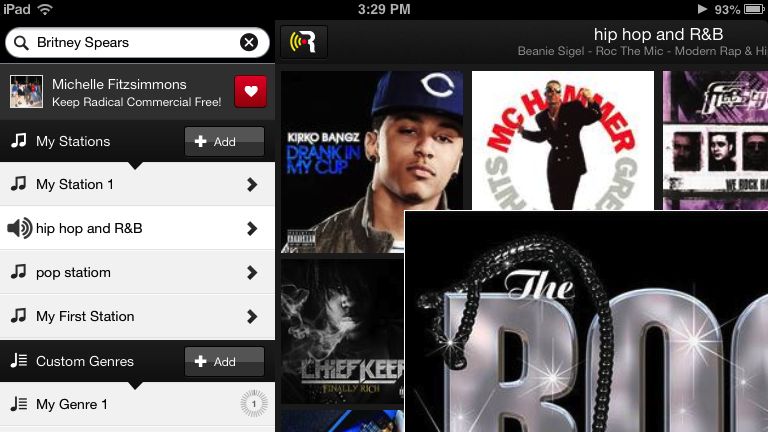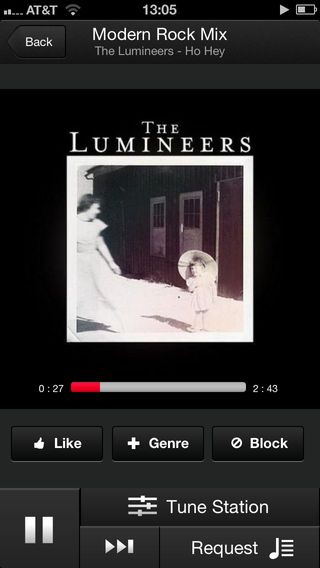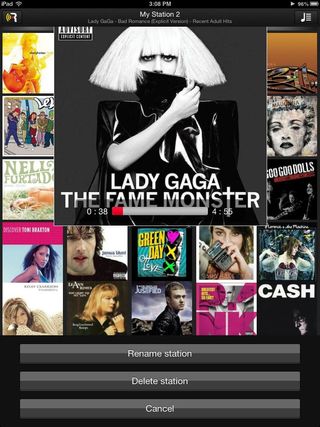Meet the ad-free, user-supported music service that wants to take on Pandora
Can a compelling concept overcome launch-time bugs?

If Aerosmith got it right, Radical.FM's journey may be far more interesting than its destination. Of course, it could cause some disruptions in the streaming music industry when all's said and done, too.
Radical.FM launched as a free iOS app today, giving users access to its library of 25 million tracks.
A heady number, but where Radical starts to stand out is in its commercial-free, user-supported model.
"People say, 'Oh that's such a great marketing ploy,' but it's a very serious thing," Thomas McAlevey, CEO and founder of Radical.FM, told TechRadar about the company's fee-free access.
"It's not just about the money, but it's the interruptions. It is so bad to have commercial interruptions when you're listening to music. We're out to make a better user experience for everyone."
Sound like a dig at some other music services you know?
How it works
"We compete directly with Pandora," McAlevey said. "With a computer algorithm picking your music, a lot of times it's 'WTF,' which for me stands not for 'what the fuck?' but 'where the fuck?' If you've had this happen, you know what I'm talking about. A computer algorithm is never going to be perfect."

Radical, he said, has zero WTF factor because it relies on humans to curate its genres.
Get daily insight, inspiration and deals in your inbox
Sign up for breaking news, reviews, opinion, top tech deals, and more.
"You pick '80s rock, and the next song will be something that's safely within what you're expecting to hear."
According to McAlevey, Radical relies on close to 30 music programmers dedicated to particular genres. For English speakers, the company wants to keep its genre total under 100.
Currently there are 20 umbrella genres, ranging from Adult Pop to Motown to Folk to Golden Oldies. Choosing one will open up a window with subgenres, and it's from these that users pick what kind of music they want playing on their stations (Moldy Oldies vs 70s Oldies, for example).

But no matter how carefully crafted those playlists, the element of "you" is still missing. To that end, Radical has something called "Custom Genres" that allow users to find a track, as long as it belongs to the firm's SoundExchange-backed collection.
The Custom Genre find will only play a 30-second snippet, and 30 song clips must be accumulated before they're added to a station. Once they're in, however, they are guaranteed to show up in your mix.
"The degree of control we offer is unprecedented," McAlevey said. "The only thing you won't get is full on demand, but that's not our game. We are a radio service."
Users also have "sliders" to adjust the value of genres relative to one another, meaning you can have 90s Rap & Hip Hop hold less value (play less frequently) than Today's Rap & Hip Hop.
Blocking songs and entire artists' catalogues is an option, but users can Unblock to bring banned tracks back into active rotation. There's also the option to like/thumbs up a song, doubling the frequency at which it's played. Unliking a song reduces it back to normal playing frequency.
There's the ability to buy tracks from iTunes or Amazon, but in our testing this option only seemed available for Curated Genre clips.
First impressions
In our time with the iPad app, we found it very buggy. Controls didn't work as they should - pressing the fast forward button wouldn't skip the current track right away, but after about 20-30 seconds, 3-4 songs would be skipped as a result. It was impossible at points to stop a song or change stations, with the same song playing on repeat (if we here Flo-rida's Spin Me Right Round one more time...). Lady Gaga would inexplicably keep playing while the app informed us Jay Z was up.

Michelle was previously a news editor at TechRadar, leading consumer tech news and reviews. Michelle is now a Content Strategist at Facebook. A versatile, highly effective content writer and skilled editor with a keen eye for detail, Michelle is a collaborative problem solver and covered everything from smartwatches and microprocessors to VR and self-driving cars.
Most Popular
